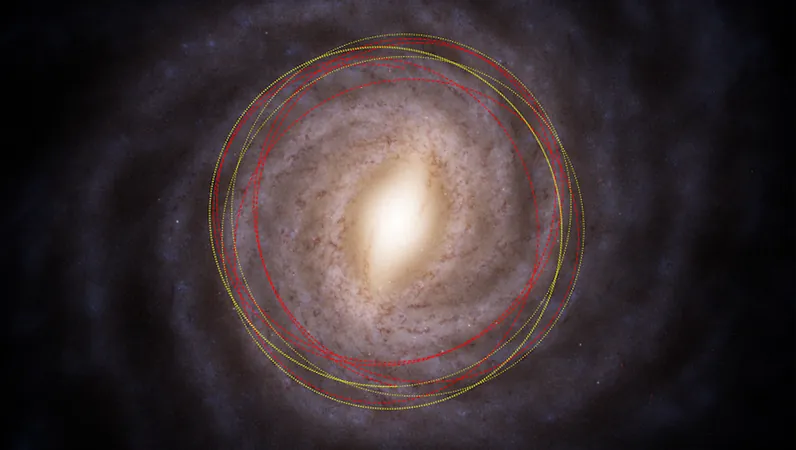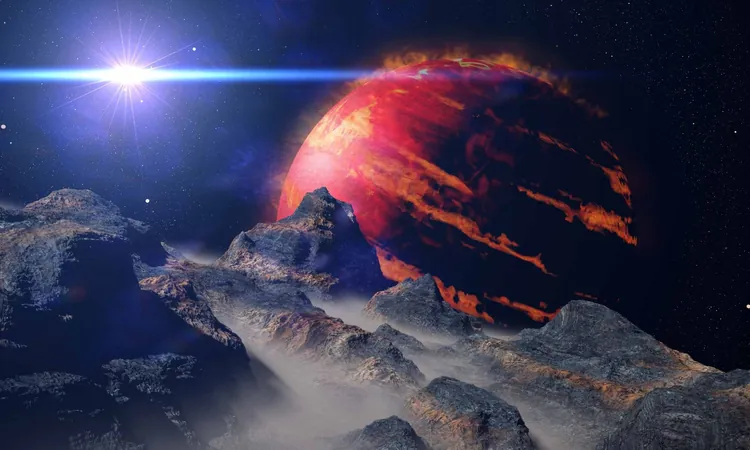
Meet 3I/ATLAS: The Oldest Comet Ever Spotted, Predating Our Solar System!
2025-07-13
Author: Arjun
A Cosmic Wonder from the Deep Past
A newly discovered interstellar object, designated 3I/ATLAS, is turning heads as scientists suggest it might be the oldest comet ever observed, potentially predating our solar system by over three billion years!
An Extraordinary Visitor
Only the third known interstellar object to traverse our cosmic neighborhood, 3I/ATLAS’s journey is unlike others. Originating from an entirely unfamiliar region of the Milky Way, this water ice-rich wanderer could be over seven billion years old, making it a truly remarkable guest in our solar system.
A Remarkable Discovery
University of Oxford's Matthew Hopkins, presenting his findings at the Royal Astronomical Society's National Astronomy Meeting, emphasizes that while typical comets like Halley's hail from our solar system and are no older than 4.5 billion years, interstellar comets like 3I/ATLAS can be significantly older.
Tracking the Oldest Comet's Path
Firstly spotted on July 1, 2025, from the ATLAS telescope in Chile when it was still 670 million kilometers away from the Sun, 3I/ATLAS is believed to be following a steep trajectory that indicates its origins from the Milky Way's ancient 'thick disk', a stellar population that is largely untouched and ancient.
Building Excitement Among Scientists
Professor Chris Lintott, co-author of the study, points out that there's a two-thirds chance this comet exceeds the age of our solar system, suggesting it's been wandering through interstellar space for eons. As it approaches the Sun, 3I/ATLAS will heat up, leading to cometary activity marked by outbursts of gas and dust, forming a spectacular coma and tail.
A Glimpse of Future Discoveries
The early signs of activity from 3I/ATLAS are promising; it may even be larger than previous interstellar visitors like 1I/'Oumuamua and 2I/Borisov. If confirmed, this could redefine our understanding of interstellar objects and refine our detection strategies for the future.
A New Era of Astronomy?
This unexpected discovery has renewed excitement in the astronomical community, with the Vera C. Rubin Observatory gearing up for its survey operations, expected to uncover between 5 to 50 new interstellar objects in the coming years. Dr. Rosemary Dorsey hints that this might even lead to a treasure trove of remarkable celestial findings.
The Impact of 3I/ATLAS
Both Hopkins and his co-authors have developed a groundbreaking predictive model during his doctoral research that could change how we study these mysterious interstellar travelers, with some of the largest telescopes in the world already keeping a watchful eye on 3I.
Don’t Miss It!
For stargazers eager to witness this celestial wonder, 3I/ATLAS is expected to be visible through modest telescopes in late 2025 and early 2026, providing an exciting opportunity to glimpse an ancient relic of our galaxy’s past.
A Historic Moment in Astronomy
As Hopkins expressed, his plans for a quiet day were derailed upon the discovery of 3I. "I woke up to messages like '3I!!!!!!!!!!' It’s an incredible chance to test our models on such a significant and ancient discovery!" With exciting times ahead, the cosmos holds many secrets waiting to be uncovered.




 Brasil (PT)
Brasil (PT)
 Canada (EN)
Canada (EN)
 Chile (ES)
Chile (ES)
 Česko (CS)
Česko (CS)
 대한민국 (KO)
대한민국 (KO)
 España (ES)
España (ES)
 France (FR)
France (FR)
 Hong Kong (EN)
Hong Kong (EN)
 Italia (IT)
Italia (IT)
 日本 (JA)
日本 (JA)
 Magyarország (HU)
Magyarország (HU)
 Norge (NO)
Norge (NO)
 Polska (PL)
Polska (PL)
 Schweiz (DE)
Schweiz (DE)
 Singapore (EN)
Singapore (EN)
 Sverige (SV)
Sverige (SV)
 Suomi (FI)
Suomi (FI)
 Türkiye (TR)
Türkiye (TR)
 الإمارات العربية المتحدة (AR)
الإمارات العربية المتحدة (AR)